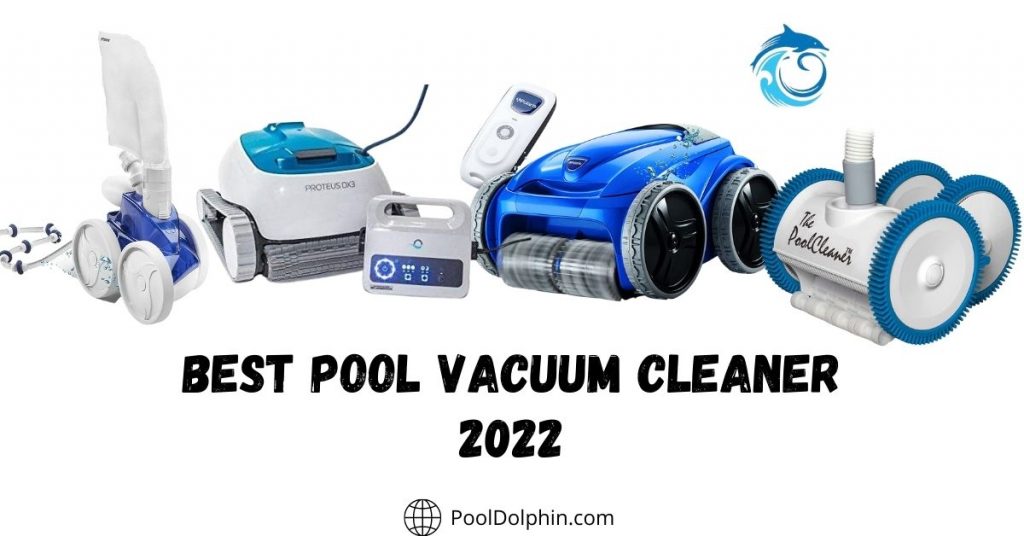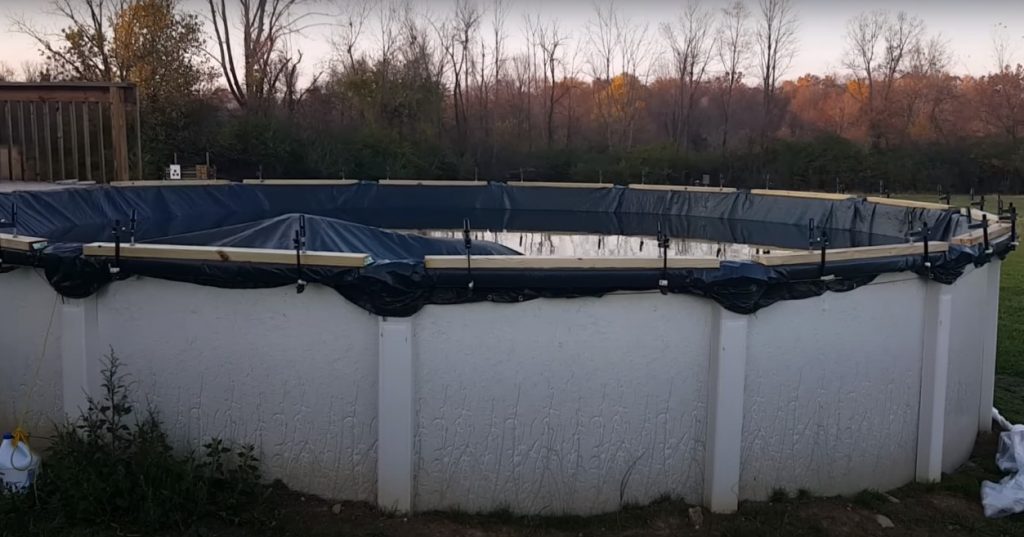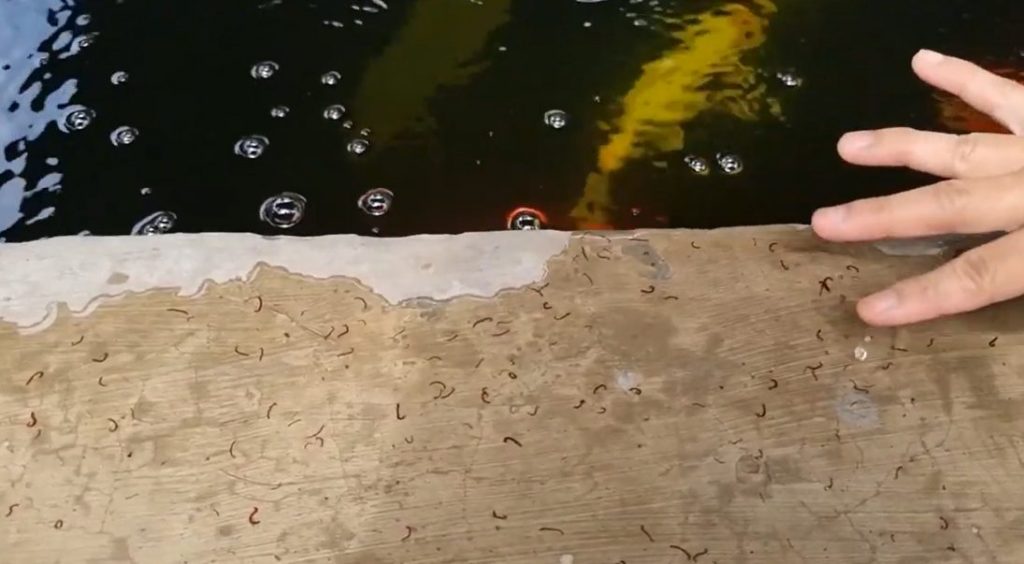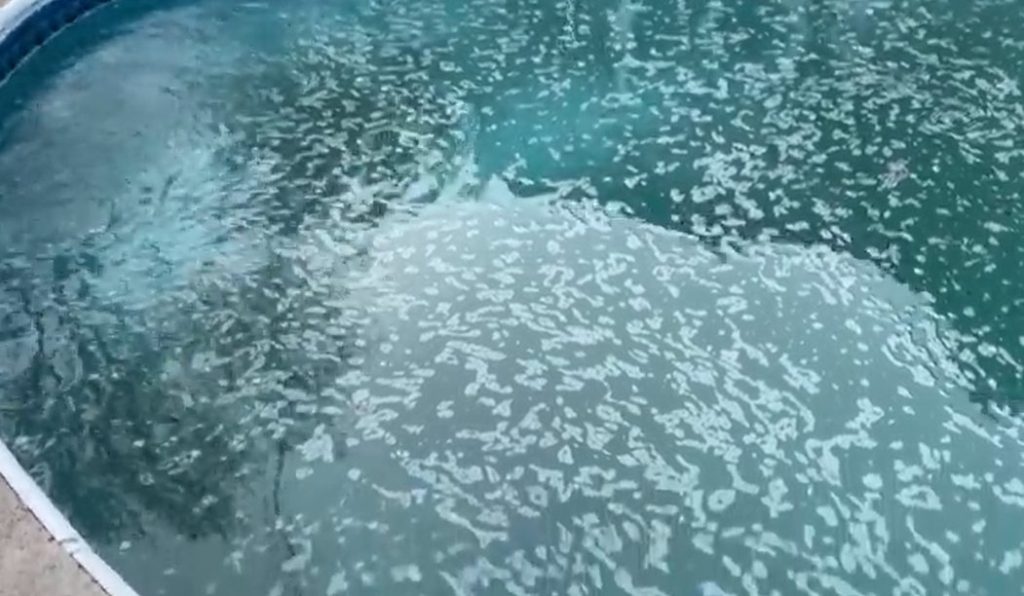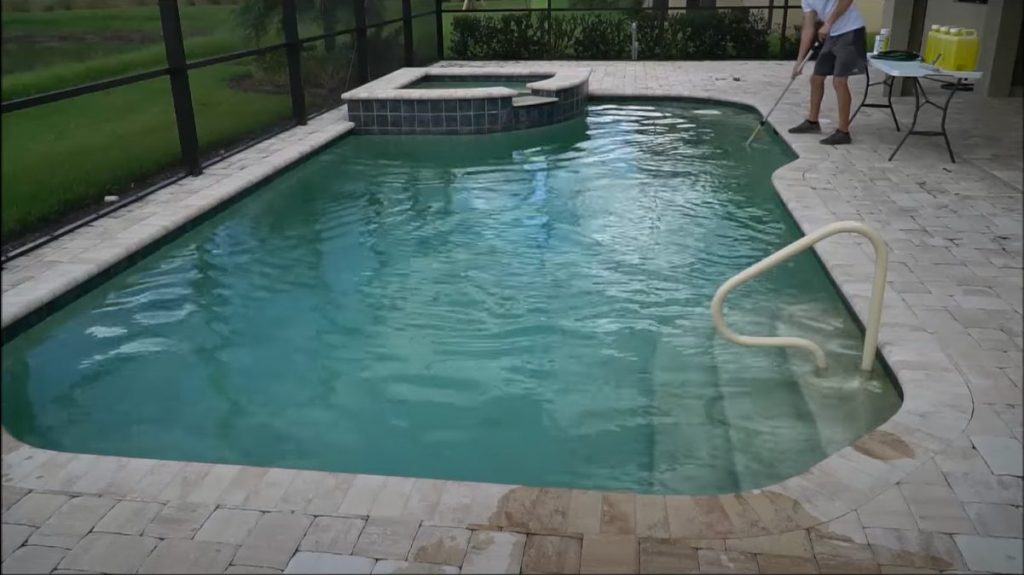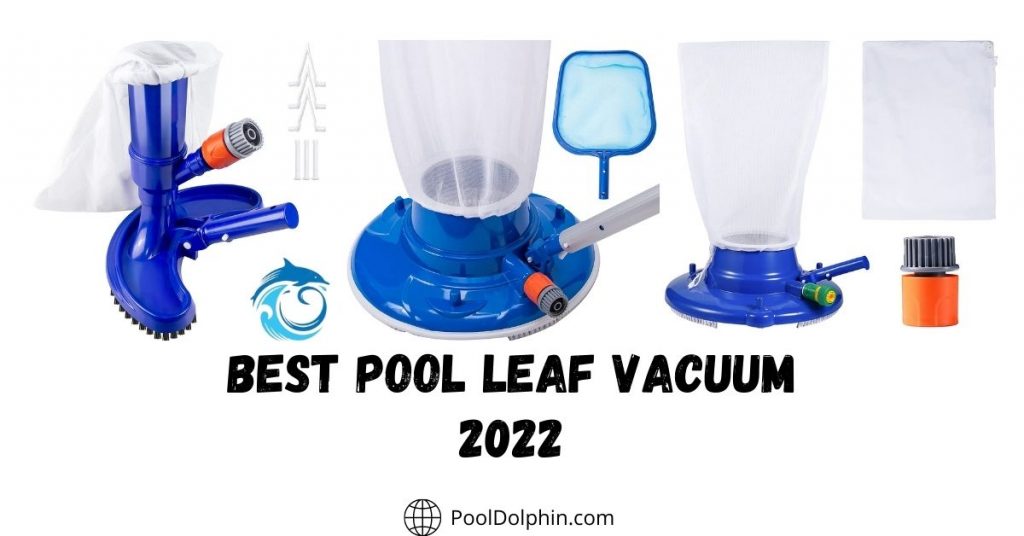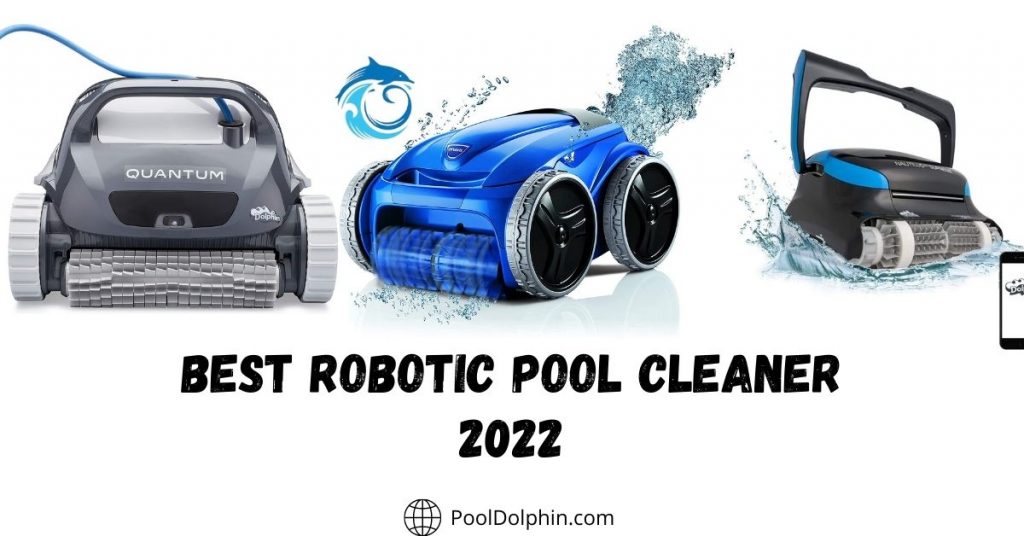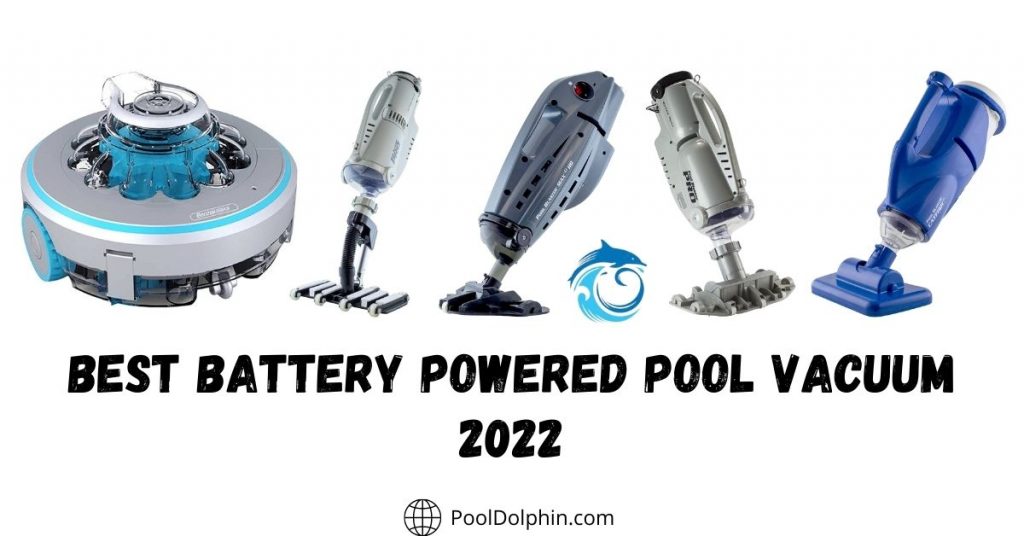Cloudy pool water is caused by four common pool issues: poor filtration, low chlorine levels, poor water chemistry, or contaminants in the water, like debris or algae.
Fortunately, there are a number of ways to combat these common problems without having to spend money on products to clear up a cloudy pool that could be costly.
4 Causes of Cloudy Pool Water And How To Fix It
Let’s talk about troubleshooting some of the issues that go on in swimming pools. Poor filtration, low chlorine levels, poor water chemistry, and outside contaminants can all be causes for the water to appear cloudy.
Here are a few suggestions for how to fix cloudy pool water.
1. Poor Filtration
Cloudy pool water is caused by tiny particles in the water. Tiny, invisible contaminants cling to your pool’s walls, floor, and above ground pool structure surfaces. It’s important to keep your filtering system running at full efficiency.
Even a dirty filter doesn’t work as well! If your filter seems to be working poorly it might be time for an upgrade of some sort (like replacing or servicing your current filtering system).
Solution. Look out for the following issues if you suspect that your filter isn’t performing properly:
Pool Filter Clogged.
Over time your pool filter gets clogged or stops working properly. When this happens, backwashing your sand or D.E. filter, clean the grids at the bottom of your D.E. filter.
Cleaning the cartridge inside your filter will restore its flow action to full power by removing any buildup in it to give it a good flush out and keep things running swimmingly again.
Skimmer Basket or Pump Basket Full of Debris.
If you’re frequently finding leaves, twigs, and other debris in your circulation system, measure your skimmer and make sure it’s strong enough to handle the amount of water circulation it needs to appropriately serve the size of your pool.
If need be, consider upgrading your skimmer. In some cases a pump upgrade or booster pump installation may be necessary.
Pool Filter Media Needs Replacing.
If your water filter is worn out or damaged, you may notice cloudy water. It’s important to replace your filter regularly, so keep track of when it was last replaced and change it according to the manufacturer’s specifications.
For example, once every 6 months or if 100 gallons have passed through the filter). If you have a “D.E.” type filter, replace the powder or grids as recommended by the manufacturer.
Not Running Your Filter Long Enough.
you need to make sure that all of its water runs through the filter system once a day. To keep the water clean, it is recommended that the filtration system run for at least 8 – 12 hours a day.
Pool Pump or Filter Needs Replacing.
As it ages, your swimming pool can get the dreaded salt build-up; you may need to replace the filter.
2- Low Chlorine Levels
When there isn’t enough chlorine in water to sanitize, pathogens, bacteria and cloudy water are formed. Contaminants such as leaves or algae build-up, sweat and cosmetic chemicals like sunscreen can also be a problem. This can diminish your pool’s safety if the UV rays and sunlight don’t get filtered out.
Solution. Test your free and combined chlorine levels as well as your cyanuric acid level. Then add shock to rebalance your chlorine levels, and add cyanuric acid to help stabilize a sun-exposed pool.
Test Your Free Chlorine Levels.
Free chlorine is the amount of available chlorine in your water. If levels are low, you don’t have enough working in your pool of water to protect swimmers from germs.
Your local pool supply store can help you test levels and, if they’re too low, recommend products including liquid shock and tablets, as well as chlorine generators.
If you have a saltwater system or you vacuum your pool, readings should be between 1 and 3 ppm (parts per million).
Calculate Your Combined Chlorine Levels.
Free chlorine is an important part of maintaining pool water balance readings. If your levels are too low, you can end up with chloramines. Chloramines are byproducts of chlorine sanitizing that can lead to irritating eyes or itchy skin.
Combined total chlorine is the difference between free and total chlorine on a water analysis report and should always be below 0.5 ppm.
Shock your pool with cal-hypo shock.
To increase your pool’s free chlorine levels quickly, use a calcium hypochlorite shock treatment. This type of pool shock should make up around 60 to 80 percent of the primary ingredient in your treatment.
Every week during peak season is ideal for this, as it helps stave off cloudy water and can refresh your water’s sanitizer levels.
Test and add cyanuric acid if needed.
Protect your water system from the sun’s UV rays by making sure you have enough cyanuric acid levels in your water.
Between 30 and 50 ppm is good, if the levels fall below 30 ppm it may be time to call a professional and if they go above 50 ppm then you want to continue testing more often as it may be getting too high over-chlorinated at this level.
3. Poor Water Chemistry.
Having high pH levels, Total Alkalinity, and Calcium Hardness can lead to the formation of scale on your pool surfaces as well as within the body of your plumbing.
This can then cause there to be pool filtration issues, bacteria growth and most notably cloudy water. The main reason that this happens would be due to poor water chemistry which makes it more difficult for chlorine to function properly.
We recommend testing the water’s pH on a weekly basis. Between 7.4 and 7.6 is ideal for your pool or spa.
Test and balance your Total Alkalinity (TA) levels.
To directly adjust your alkalinity level, use one of three chemicals like muriatic acid or a pH decreaser to decrease it. To raise your alkalinity levels, you can use baking soda or an alkalinity increaser.
Test and balance your pH levels.
Improper pH levels can affect the chlorine and other chemicals in your pool. High levels will create calcium build-up which leads to cloudy water.
Low levels of pH cause the chlorine to be overly reactive and it can be quickly depleted, meaning contaminants build up quicker and without proper treatment, your pool water is cloudy.
If you are experiencing any of these problems we suggest using a pH decreaser or a heater (depending on your specific problem). The goal here is not to make things overly complicated. Users should know that purchasing a product will fix their problem.
Test and balance your Calcium Hardness levels.
If you have a high calcium hardness level, it could be causing the water inside your pool to look cloudy. The fix is as easy as exiting your pool and refilling it with fresh outdoor water through a garden hose.
It might also help to drain some of the water from your swimming area before replacing it. Not only will this help clear out any cloudiness. But you’ll be able to check water levels too. By leaving the water, chemicals can build up over time which may lower chlorine levels or cause them to become entirely ineffective altogether.
4. Contaminants, Like Debris or Algae
Contaminants and small debris from leaves, birds, and animals can settle in your pool. These tend to get worse after a large weather event such as rain or wind. It’s also important that the pool filter is maintained regularly for the best results.
The most common reason why your pool might be cloudy is due to algae early on in the season. This is especially common during springtime because of warmer temperatures and more sun time.
Solution. You should clean and shock your pool to prevent algae from coming back. Do water tests and cleans up the house along with balancing pH levels on a regular basis.
Treat algae.
If you’ve begun to notice visible algae in your swimming pool, chances are you’ll need to get rid of the algae before treating your cloudy water. Unfortunately, an algaecide won’t solve the problem. it’s better as a preventative measure than a treatment.
To remove the algae, you’ll want to take steps such as skimming, brushing, and vacuuming. Remember to bypass your filter by simply turning your pool power vacuum on its waste setting.
Storms can blow dirt and debris into your pool, which can cause the water to become cloudy or dusty. It is generally advised to keep an eye out for rain clouds so that you may be able to prepare for them in advance.
Before it starts to rain, test and balance your pool water.
this will prevent the chlorine from dropping. When swimming pools get cloudy, we recommend skimming, brushing or vacuuming the pool as soon as you see that the water isn’t clear and then add chemicals, including chlorine, until the water is back to its original state.
Test Balance and Clean
If, once you’ve cleared the pool of cloudy water, you want to keep it that way, there are a few things you should definitely do.
You may want to take some time testing the chemicals in your swimming pool like checking chlorine levels and using a water testing kit so you know they’re all at an optimal point.
How To Use Pool Clarifier Clears Cloudy Water Quickly
Pool clarifier uses your pool filter system to increase circulation and help clear up the cloudy water in your swimming pool. This can work as an alternative to traditional ways of eliminating a greenish tint caused by pool algae.
But it does take time because it relies on filtering from the bottom of the swimming pool upward using the power in the filter pump. A pool clarifier is useful for milder cases of greenish or yellowish cloudy water.
1. Skim, Brush, and Vacuum Your Pool
While skimming your pool, remove any large debris using a heavy-duty skimmer. Brush the walls of your pool well to get out any large particles that may be stuck, and then vacuum your pool manually.
2. Test and Balance Your Water
It’s always better to test your water with a liquid test kit, but if you don’t have one you can test the PH level of your pool water using either strips or with a bottle of pH or alkalinity dye.

3. Shock Your Pool
To eliminate any contaminants in your pool water, you must add a chlorine shock granule to your swimming pool. If the water is cloudy due to a pool algae bloom, you’ll have to double or triple shocking depending on your specific algae problem. Remember that when shocking the pool at night, it will take maximum effect to clear up the pool water.
4. Run Your Filter 24/7
Your pool will clear faster depending on the type of filter you own. D.E Filters, for example, filter out extra fine particles and will clear up cloudy water more quickly. If you have a cartridge filter, it will take a bit longer. If you have a sand filter, it will take the longest.
5. Increase Your Pool Circulation
Every pool transaction should go through the skimmer to remove any outside debris. Just making sure that you do this and that your pump is operating properly every day, will let your water filter work more effectively by allowing all of your swimming pool water to pass through it.
6. Add Pool Water Clarifier
After your pool water has circulated and all of the chemicals have settled in, it’s time to add a pool clarifier (or conditioner). Once your water becomes cloudy, the primary purpose of a clarifier is to bind microscopic particles together into bigger particles that are easier for your filter system to capture.
Be sure to refer to the manufacturer’s instructions when determining how much of a clarifier you should be adding.
Clorox Super Pool Water Clarifier

This concentrated pool clarifier can be used once a week or when you have company over. The granules of the pool clarifier come together and form small clumps that are easily picked up by your filter.
How To Use Pool Flocculant (Clears Cloudy Water Quickly)
Pool Floc is a coagulant used in pools to cause particles of dirt and other contaminants to clump together and sink to the bottom, thereby making them easier to remove.
It’s an alternative to using a clarifier but it does require more work since you have to manually vacuum up most of the dirt.
1. Balance Your pH
Test the pH levels of your aquatic environment using test strips or a liquid test kit, and then adjust your level as needed, adding an increment or decrement per the water conditions.
2. Add Pool Flocculant (Floc) to Your Water
To help avoid unpleasant cloudiness in your pool, many people choose to use flocculant. This binds together all of the contaminants, which then sink to the bottom of your pool. Be sure to read the manufacturer’s instructions on how much is recommended for your size as this differs depending on your swimming pool setup.
BioGuard PowerFloc Pool Flocculant
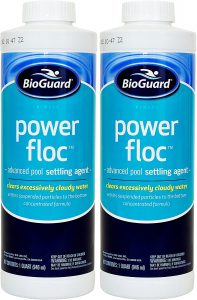
This powerful swim pool flocculant helps clear up excessively cloudy water. The more debris in the water, the faster it works! It binds together particles and sinks them to the bottom of your pool for easy vacuum removal and sparkling clear water.
3. Circulate Your Water
Running your pool’s filter system for two hours while adding water conditioner can get the chemical evenly distributed throughout your entire swimming pool. Set your multiport valve to “recirculate” so you won’t waste water by skimming it out of the pool and through your system.
4. Vacuum Water Out Of Your Pool
You should now see a big cloud of gunk at the bottom of the pool. This means that all of the particles that were causing your water to be cloudy have been collected and swept to the bottom of your pool. Now you can remove them through your filter in order to get a better view on what is left in your pool.
5. Test And Balance Your Water
After changing the water in your swimming pool you need to rebalance your water chemistry. Test your pool water using test strips or liquid test kit and add chlorine slowly until required levels are reached.
FAQs About Cloudy Pool Water
How long does it take for a cloudy pool to clear?
Depending on how cloudy your pool water is, it may take a few days to clear. If you’re using a clarifier, you’ll need to run your filter 24 hours a day, keep your pool chemistry balanced, and add the proper amount of water clarifier every other day until it’s clear.
Pool flake is more powerful and can clear up your cloudy pool water in just one or two days. But you will need to use a manual vacuum to remove all of the accumulated particles.
Should you swim in cloudy pool water?
Do not swim in a cloudy pool. The risk of bacterial or other contaminants getting inside your body is high as well as an increased risk of drowning, since there will be no way to see the bottom of the pool to avoid running into anything.
Why is my pool cloudy after shocking?
Adding a pool shock can often make a pool temporarily cloudy. The good news is that the cloudiness should disappear after some time as the water filters through.
This also happens if you use a cheaper type of shock, so be sure to only use cal-hypo shock and read the instructions for the proper dosages.
Does too much chlorine make pool water cloudy?
Shock treatment can kill bacteria, viruses, and algae by clouding the water. However, your pool may be cloudy elsewhere if you have a high pH level, alkalinity level, or hardness of calcium.
Will rainwater make my pool cloudy?
Rainstorms can be harmful for a pool. Because there’s more water moving around in the soil, contaminants get washed into your pool and change its chemistry.
When this happens, chlorine may not be able to keep up with the increased volume of water which can cause cloudy water.


